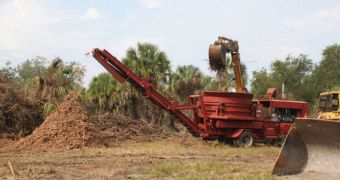The wetlands feeding into Tampa Bay near Ruskin, Florida, are now more diverse and healthy than they were just a couple of years ago. A restoration process in which numerous organizations attended saw the once-dead wetlands transform into thriving habitats.
In order to make this a reality, scientists from the US National Oceanic and Atmospheric Administration (NOAA) collaborated closely with colleagues from the Ecosphere Restoration Institute (ECI), as well as state and local partners.
On Saturday, they got together to celebrate the successful completion of the restoration process, and to survey the results of their work. ERI was primarily in charge of conducting the work, by hiring local contractors to carry out the necessary modifications on the wetlands.
Some of the most important aspects of the process included the removal of Brazilian pepper and other invasive tree species, that were brought from South America or elsewhere. These species were chocking the habitats, destroying indigenous species, and throwing the habitat off-balance.
In addition, the contractors also reconnected some of the wetlands to the actual bay, which is a very important thing to do if you want to support the development of viable ecosystems in such places.
Moreover, stagnant and abandoned ponds were transformed into thriving wetlands. “This project restores fish and wildlife habitat lost in the 1950s when the wetlands were filled for development,” explains Dr. Larry Robinson.
“The restoration work has helped support jobs for the community and improve important nursery habitat for fish, which is so vital to local recreational and commercial fisheries,” he continues.
Robinson holds an appointment as the NOAA assistant secretary of commerce for oceans and atmosphere. The federal agency contributed $750,000 to this restoration project, which was funded through the American Reinvestment and Recovery Act.
“Without the NOAA Recovery Act funding, this project would have taken many years to complete since it would have required piecemeal implementation as funding became available,” explains ERI President Thomas Ries.
“Instead we’ve been able to construct it in a short amount of time and with significant cost savings,” the official goes on to say.
This is only one of more than 50 restoration projects that are financed through the ARRA. The Act makes some $167 million available to NOAA for awarding to partners in completing these processes.

 14 DAY TRIAL //
14 DAY TRIAL //